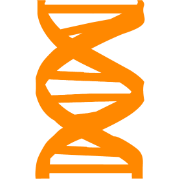BPS District Science Standards Book
Completion requirements
HS Science Concepts
[LS] Life Science
High School Science
"I can ... statements"
 In Life Sciences, the high school level focus on students developing understanding of several scientific practices. These include developing and using models, planning and conducting investigations, analyzing and interpreting data, using mathematical and computational thinking, and constructing explanations; and to use these practices to demonstrate understanding of the core ideas. Students are also expected to demonstrate understanding of several of engineering practices including design and evaluation.
In Life Sciences, the high school level focus on students developing understanding of several scientific practices. These include developing and using models, planning and conducting investigations, analyzing and interpreting data, using mathematical and computational thinking, and constructing explanations; and to use these practices to demonstrate understanding of the core ideas. Students are also expected to demonstrate understanding of several of engineering practices including design and evaluation.
SCI-HS.LS1 DCI:
[LS1] From Molecules to Organisms: Structure and Processes
- SCI-HS.LS1.01 Construct an explanation based on evidence for how the structure of DNA determines the structure of proteins which carry out the essential functions of life through systems of specialized cells.
- SCI-HS.LS1.02 Develop and use a model to illustrate the hierarchical organization of interacting systems that provide specific functions within multicellular organisms.
- SCI-HS.LS1.03 Plan and conduct an investigation to provide evidence that feedback mechanisms maintain homeostasis.
- SCI-HS.LS1.04 Use a model to illustrate the role of cellular division (mitosis) and differentiation in producing and maintaining complex organisms.
- SCI-HS.LS1.05 Use a model to illustrate how photosynthesis transforms light energy into stored chemical energy.
- SCI-HS.LS1.06 Construct and revise an explanation based on evidence for how carbon, hydrogen, and oxygen may combine with other elements to form large carbon-based molecules.
- SCI-HS.LS1.07 Use a model to illustrate that cellular respiration is a chemical process whereby the bonds of food molecules and oxygen molecules are broken and the bonds in new compounds are formed resulting in a net transfer of energy.
SCI-HS.LS2 DCI:
[LS2] Ecosystems: Interactions, Energy, and Dynamics
- SCI-HS.LS2.01 Use mathematical and/or computational models to support explanations of factors that affect carrying capacity of ecosystems at different scales.
- SCI-HS.LS2.02 Use mathematical representations to support and revise explanations based on evidence about factors affecting biodiversity and populations in ecosystems of different scales.
- SCI-HS.LS2.03 Construct and revise an explanation based on evidence for the cycling of matter and flow of energy in aerobic and anaerobic conditions.
- SCI-HS.LS2.04 Use mathematical representations to support claims for the cycling of matter and flow of energy among organisms in an ecosystem.
- SCI-HS.LS2.05 Develop a model to illustrate the role of photosynthesis and cellular respiration in the cycling of carbon among the biosphere, atmosphere, hydrosphere, and geosphere.
- SCI-HS.LS2.06 Evaluate the claims, evidence, and reasoning that the complex interactions in ecosystems maintain relatively consistent numbers and types of organisms in stable conditions but changing conditions may result in a new ecosystem.
- SCI-HS.LS2.07 Design, evaluate, and refine a solution for reducing the impacts of human activities on the environment and biodiversity.
- SCI-HS.LS2.08 Evaluate the evidence for the role of group behavior on individual and species’ chances to survive and reproduce.
SCI-HS.LS3 DCI:
[LS3] Heredity: Inheritance and Variation of Traits
- SCI-HS.LS3.01 Construct an explanation to clarify relationships about the role of DNA and chromosomes in coding the instructions for characteristic traits passed from parents to offspring.
- SCI-HS.LS3.02 Make and defend a claim based on evidence that inheritable genetic variations result from various factors.
- SCI-HS.LS3.03 Apply concepts of statistics and probability to explain the variation and distribution of expressed traits in a population.
SCI-HS.LS4 DCI:
- SCI-HS.LS4.01 Analyze and interpret scientific information that common ancestry and biological evolution are supported by multiple lines of empirical evidence.
- SCI-HS.LS4.02 Construct an explanation based on evidence that the process of evolution primarily results from four factors:
- SCI-HS.LS4.03 Use mathematical models to support explanations that organisms with an advantageous heritable trait tend to increase in proportion to organisms lacking this trait.
- SCI-HS.LS4.04 Construct an explanation based on evidence for how natural selection leads to adaptation of populations.
- SCI-HS.LS4.05 Evaluate the evidence supporting claims that changes in environmental conditions may result in increases in the number of individuals of some species, the emergence of new species over time, and the extinction of other species.
- SCI-HS.LS4.06 Design and revise a solution to mitigate adverse impacts of human activity on biodiversity.

